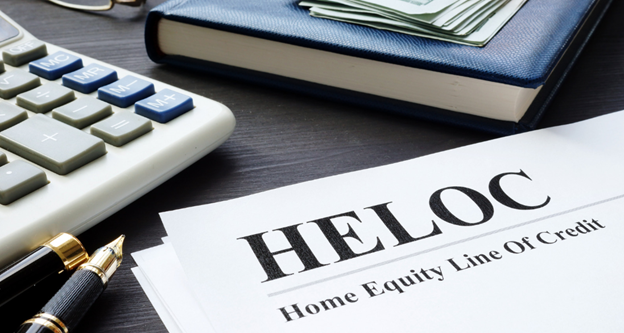How Much Equity Can I Borrow from My House
 The amount of equity you can borrow from your house depends on several factors, including the current market value of your home, the amount you owe on your mortgage, and your credit score.
The amount of equity you can borrow from your house depends on several factors, including the current market value of your home, the amount you owe on your mortgage, and your credit score.
In general, lenders typically allow you to borrow up to 80% of your home’s equity. For example, if your home is currently valued at $400,000 and you owe $200,000 on your mortgage, you may be able to borrow up to $160,000 (80% of the $200,000 in equity you have in your home).
However, it’s important to note that borrowing against your home’s equity comes with risks. If you are unable to make payments on the loan, you could potentially lose your home through foreclosure. It’s important to carefully consider the risks and benefits of borrowing against your home’s equity before proceeding. It’s also recommended to consult with a financial advisor or a mortgage professional to help you make an informed decision.
What Is My Loan-to-Value?
Your loan-to-value (LTV) is the ratio of the amount of money you borrowed (usually through a mortgage) to the appraised value of the property. It is typically expressed as a percentage.
To calculate your LTV, you need to divide the amount of your loan by the appraised value of the property, then multiply the result by 100. For example, if you have a mortgage of $250,000 on a property appraised at $400,000, your LTV is 62.5% (250,000 / 400,000 x 100 = 62.5%).
LTV is an important factor in determining the risk level of a loan. Lenders generally prefer lower LTV ratios, as they indicate a lower risk of default. A high LTV, on the other hand, can make it more difficult to get approved for a loan, or result in higher interest rates or additional fees.
How Can I Increase My Home Equity?
There are several ways to increase your home equity, which is the difference between the current value of your home and the amount you owe on your mortgage. Here are a few strategies to consider:
Make extra payments on your mortgage: Making additional payments towards your principal balance can help reduce the amount of interest you’ll pay overtime, and also help you build equity more quickly.
Increase the value of your home: Making home improvements or renovations can increase the value of your home, which can in turn increase your equity. Focus on upgrades that provide the best return on investment, such as kitchen and bathroom remodels or adding energy-efficient features.
Refinance to a shorter-term loan: If you can afford higher monthly payments, refinancing to a shorter-term loan can help you pay off your mortgage faster and build equity more quickly.
Avoid taking out additional loans: Avoid taking out additional loans against your home equity, as it will reduce the amount of equity you have in your home.
Regular maintenance: Regular maintenance, such as repairing leaks, repainting walls, and replacing worn-out fixtures can help maintain your property’s value and prevent the need for expensive repairs.
It’s important to remember that building equity is a long-term strategy and requires consistent effort and discipline over time. Consult with a financial advisor or a mortgage professional to determine the best approach for your individual situation.

 When homeowners need to tap into the equity they’ve built in their homes, two popular options are Home Equity Loans (HEL) and Home Equity Lines of Credit (HELOC). Both types of loans allow homeowners to access funds for various purposes, such as home improvements, debt consolidation, or unexpected expenses. However, it’s essential to understand the differences between these two mortgage products to make an informed decision that aligns with your specific needs and financial goals. Here are some important differences between the two.
When homeowners need to tap into the equity they’ve built in their homes, two popular options are Home Equity Loans (HEL) and Home Equity Lines of Credit (HELOC). Both types of loans allow homeowners to access funds for various purposes, such as home improvements, debt consolidation, or unexpected expenses. However, it’s essential to understand the differences between these two mortgage products to make an informed decision that aligns with your specific needs and financial goals. Here are some important differences between the two. Last week’s economic reporting included readings on the Fed’s interest rate decision, S&P Case-Shiller’s Home Price Indices, sales of new homes, and pending home sales. Weekly readings on mortgage rates and jobless claims were also released.
Last week’s economic reporting included readings on the Fed’s interest rate decision, S&P Case-Shiller’s Home Price Indices, sales of new homes, and pending home sales. Weekly readings on mortgage rates and jobless claims were also released.
 Purchasing a home is one of the most significant financial decisions many individuals make in their lifetime. It involves a substantial investment of money and requires careful consideration to ensure long-term financial stability. To navigate the complexities of the home-buying process, it’s essential to be well-informed about the various financial considerations involved. In this blog post, we will explore key factors to consider when buying a home to help you make informed decisions and achieve financial success.
Purchasing a home is one of the most significant financial decisions many individuals make in their lifetime. It involves a substantial investment of money and requires careful consideration to ensure long-term financial stability. To navigate the complexities of the home-buying process, it’s essential to be well-informed about the various financial considerations involved. In this blog post, we will explore key factors to consider when buying a home to help you make informed decisions and achieve financial success.